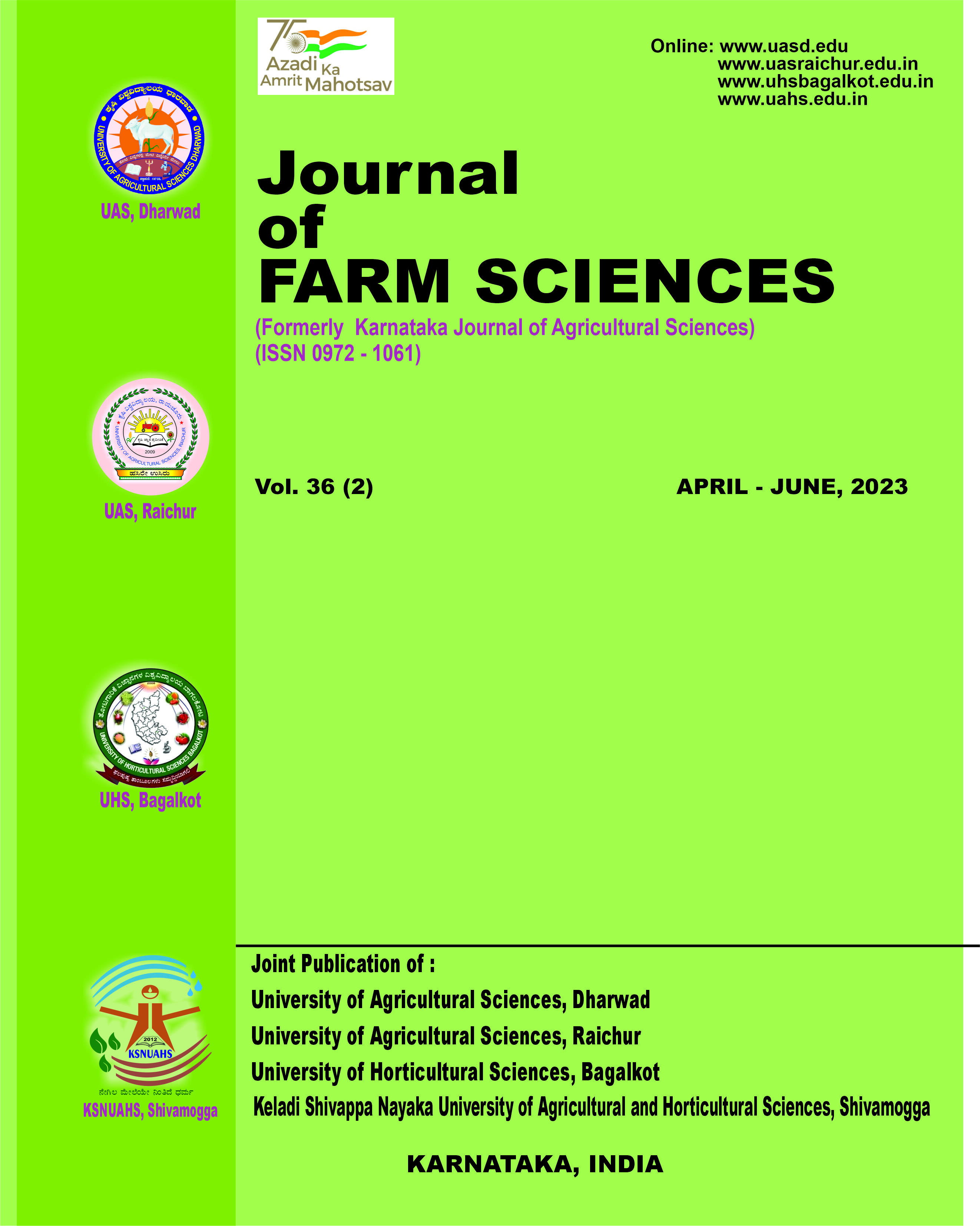Predominance and prevalence of Fusarium head blight ofwheat in northern parts of Karnataka
Abstract
Fusarium head blight (FHB) is one of the destructive diseases of wheat worldwide. Epidemics of FHB disease aresporadic globally and have caused havocs due to the reduction in the yields and production of mycotoxins. Among the manyspecies involved in the complex, Fusarium poae is reported as the causal organism in northern parts of Karnataka.However, the incidence and severity of FHB as well as the causal Fusarium speciesare reported to vary among geographicalregions and years due to variation in climatic and weather conditions and cropping practices. A survey was conducted duringrabi 2021-22 to record the incidence and severity of Fusarium head blight of wheat in major wheat growing regions ofnorthern parts of Karnataka viz., Dharwad, Bagalkote and Belagavi districts. The maximum FHB index was recorded inBelagavi district (12.20%) followed by Bagalkote district (11.89%) and the lowest FHB index was observed in Dharwad district(6.05 %). The maize-wheat sequential cropping system exhibited higher incidence and severity of the disease. The wheat sownduring first fortnight of October and second fortnight of November recorded the maximum Fusarium head blight index
Copyright (c) 2023 Journal of Farm Sciences

This work is licensed under a Creative Commons Attribution-NonCommercial-NoDerivatives 4.0 International License.


